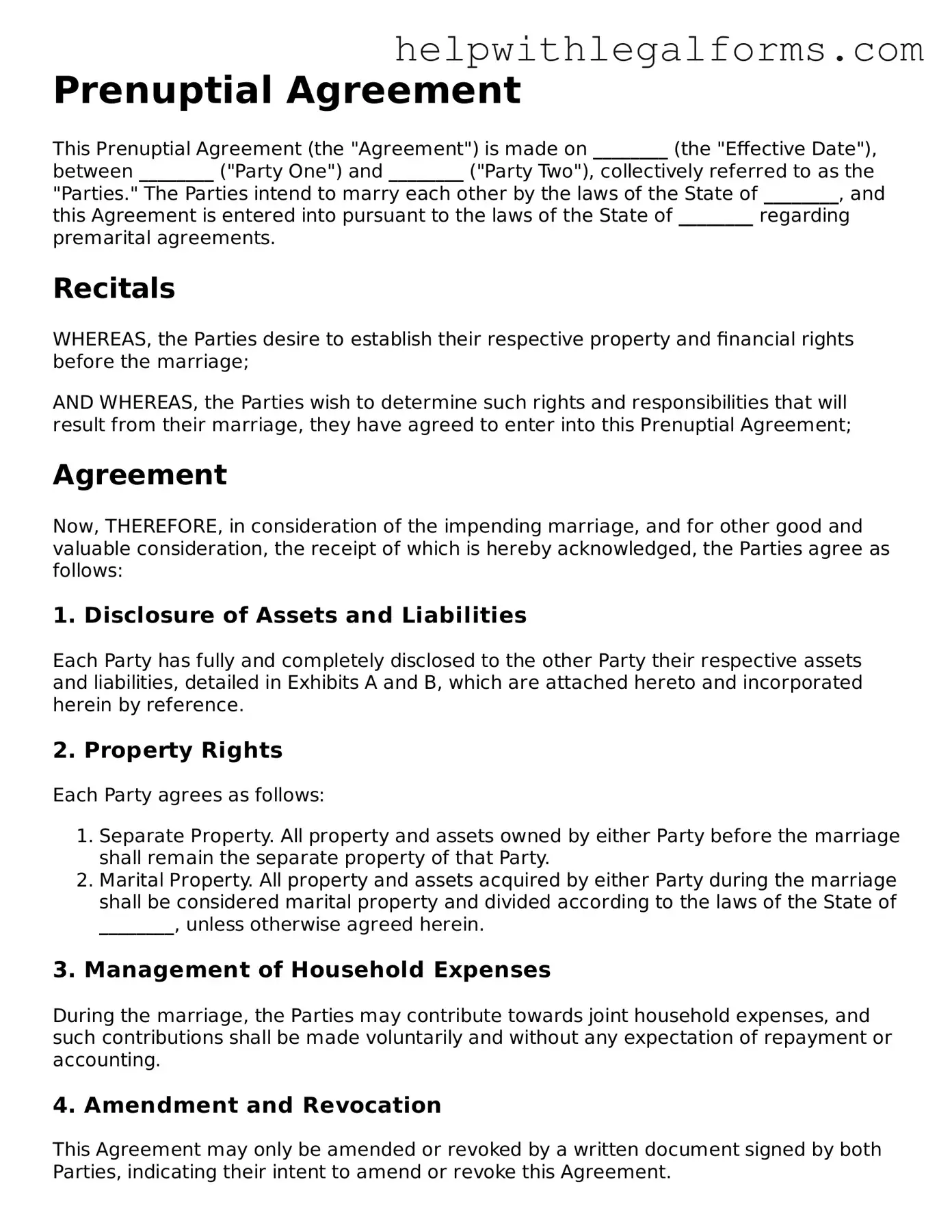Prenuptial Agreement
This Prenuptial Agreement (the "Agreement") is made on ________ (the "Effective Date"), between ________ ("Party One") and ________ ("Party Two"), collectively referred to as the "Parties." The Parties intend to marry each other by the laws of the State of ________, and this Agreement is entered into pursuant to the laws of the State of ________ regarding premarital agreements.
Recitals
WHEREAS, the Parties desire to establish their respective property and financial rights before the marriage;
AND WHEREAS, the Parties wish to determine such rights and responsibilities that will result from their marriage, they have agreed to enter into this Prenuptial Agreement;
Agreement
Now, THEREFORE, in consideration of the impending marriage, and for other good and valuable consideration, the receipt of which is hereby acknowledged, the Parties agree as follows:
1. Disclosure of Assets and Liabilities
Each Party has fully and completely disclosed to the other Party their respective assets and liabilities, detailed in Exhibits A and B, which are attached hereto and incorporated herein by reference.
2. Property Rights
Each Party agrees as follows:
- Separate Property. All property and assets owned by either Party before the marriage shall remain the separate property of that Party.
- Marital Property. All property and assets acquired by either Party during the marriage shall be considered marital property and divided according to the laws of the State of ________, unless otherwise agreed herein.
3. Management of Household Expenses
During the marriage, the Parties may contribute towards joint household expenses, and such contributions shall be made voluntarily and without any expectation of repayment or accounting.
4. Amendment and Revocation
This Agreement may only be amended or revoked by a written document signed by both Parties, indicating their intent to amend or revoke this Agreement.
5. Governing Law
This Agreement shall be governed by and construed in accordance with the laws of the State of ________, without giving effect to any choice or conflict of law provisions.
6. Entire Agreement
This Agreement contains the entire understanding between the Parties and supersedes all prior discussions, negotiations, and agreements, whether oral or written, regarding the subject matter hereof.
7. Acknowledgment
Each Party acknowledges that they have had sufficient time to review this Agreement, consult with independent legal counsel, and fully understand its terms and consequences.
IN WITNESS WHEREOF, the Parties have executed this Prenuptial Agreement on the date first above written.
Party One: ____________________________________ Date: __________
Party Two: ____________________________________ Date: __________
